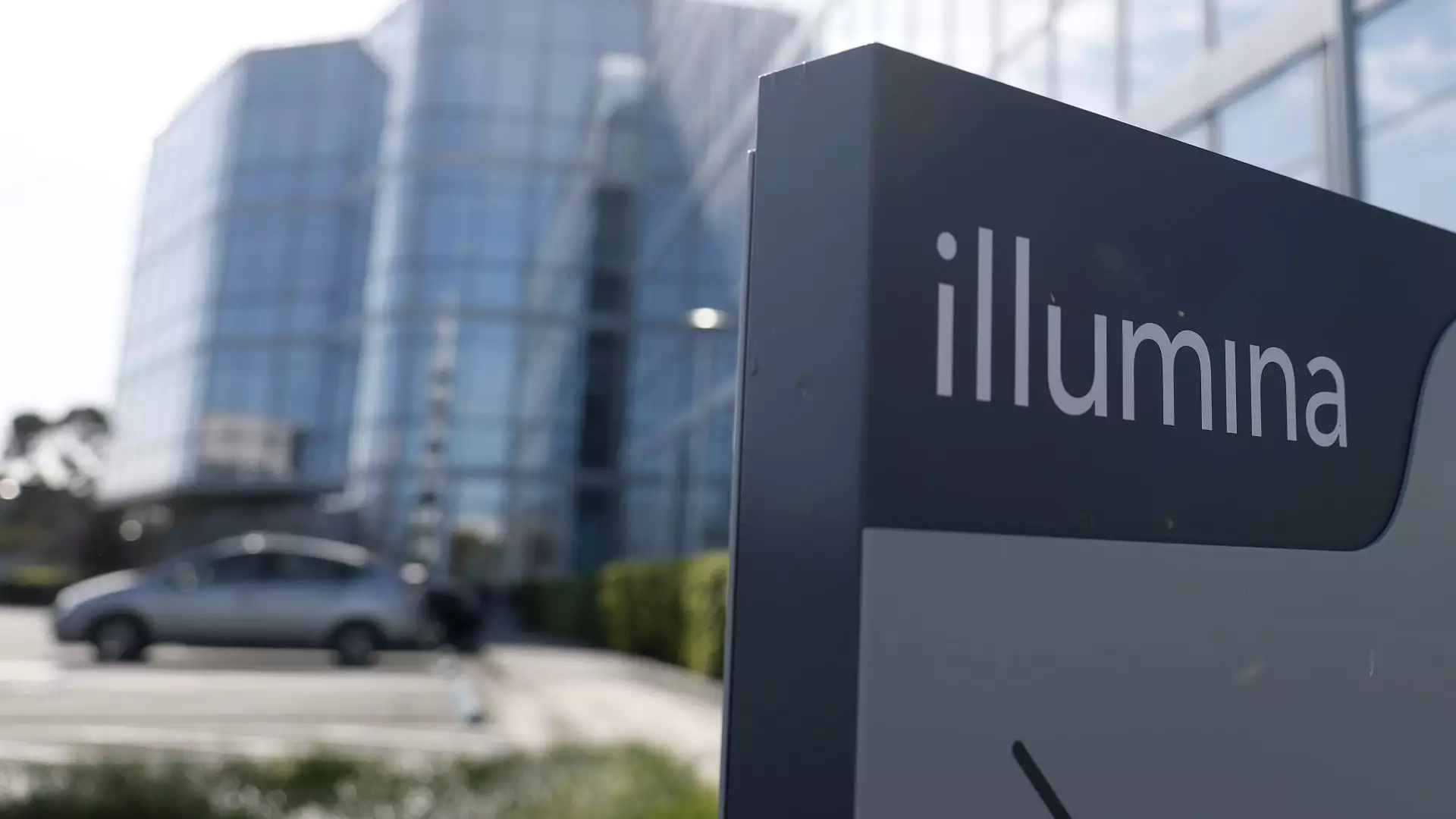In the fast-paced realm of biotechnology, few companies have captured the public’s attention like Illumina. With its exceptional sequencing and genomic analysis technologies, Illumina maintained a formidable presence, reaching dizzying heights during the COVID-19 pandemic. However, beneath the surface of its once stellar performance lies a cautionary tale of mismanagement, costly decisions, and stubborn resilience amidst shifting market realities. Once valued at nearly $70 billion, Illumina today grapples with a dramatically diminished market capitalization, a stark reminder that success in the biotech arena is often tempered by intricate challenges closer to home.
Illumina’s technology is reputed for its precision and efficacy, with its revolutionary sequencing-by-synthesis method allowing researchers and clinicians to conduct genetic testing with unprecedented accuracy. Despite this, the company has stumbled in its path, witnessing a glimmer of success during the pandemic — a surprising surge in revenues that saw estimates soar from $3.2 billion to $4.5 billion in a matter of years. However, as the urgent need for testing receded, the harsh reality of the post-pandemic market set in, leaving Illumina to flounder in the wake of its own rapid expansions.
The Grail Debacle: A Costly Lesson
One of the gravest errors in Illumina’s recent history centers around its entanglement with Grail, a company it spun out only to lure back in an $8 billion acquisition attempt. The journey was far from straightforward; it faced staunch opposition from regulatory bodies like the Federal Trade Commission and the European Union, which ultimately thwarted the deal, resulting in Illumina incurring hefty fines. The corporate strategy behind Grail seemed well-conceived: focus on early cancer detection, a noble pursuit in the world of biotechnology. Yet the execution faltered, leading to a significant financial blow and damaging Illumina’s reputation in various markets.
The ramifications of the Grail affair are profound. Investors have witnessed a gradual decline in share price and an unsettling apprehension regarding future profitability. The immediate aftermath has brought more than just financial repercussions; it has exposed the volatility inherent in biotech investments, which often hinge on successful regulatory navigation and market adoption. Illumina’s story exemplifies how corporate miscalculations can spiral into broader market skepticism, challenging investor confidence in what was once deemed an unwavering titan in gene sequencing technology.
Leadership Shifts: New Faces, New Directions
The announcement of Keith Meister from Corvex Management joining Illumina’s board sparks both optimism and skepticism. As someone who has exhibited skillful navigation in corporate landscapes, he brings with him a wealth of experience that may revitalize Illumina in its quest for redemption. Yet, the question remains whether new leadership can indeed pivot the company away from its convoluted past. Under his stewardship, there exists hope for a strategic overhaul that could leverage new technologies and steer the organization toward recovering its footing in a competitive landscape.
However, the challenges facing Illumina should not be understated. With ongoing geopolitical headwinds, particularly in markets such as Russia and China, and the perennial uncertainty surrounding biotech funding from the National Institutes of Health, the journey towards a stable market presence will not be simple. Moreover, the transition to the upcoming NovaSeq X technology ought to be promising in the long run, yet it poses immediate risks that may erode revenues in the short term. Success in this domain requires navigation through a labyrinth of trials that can deter even the most bullish investors.
The Future Landscape: A Delicate Balance
As the dust settles from the tumultuous Grail saga and Illumina embarks on this new chapter, it is essential to assess the current market dynamics and emerging threats. The company retains a dominant 80% share of the gene-sequencing market, providing it with a competitive edge that could be beneficial amid this tumultuous transition. Additionally, its razor-and-blade business model continues to promise ongoing revenue streams through consumables that are more lucrative than the machines themselves. Yet, the path forward is fraught with complexities that require adept management of resources and investor sentiment.
Ultimately, Illumina stands at a crossroads, where its legacy of innovation collides with the harsh realities of a shifting market. The ability to rebound from past missteps and cement its role as a pioneer in biotechnology will rely on leadership that embraces both risk and opportunity. As they move forward, one thing remains paramount: the necessity to remain vigilant and respond dynamically to the ever-evolving landscape. Illumina’s trials beckon it to rise, not just from the ashes of its recent setbacks, but to redefine what it means to be an industry leader in an increasingly unpredictable world.

